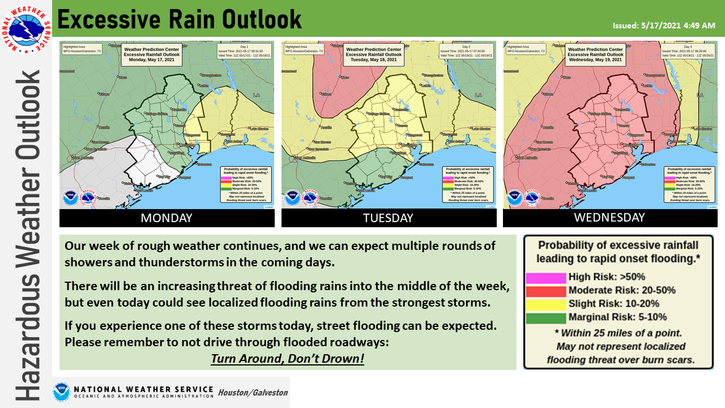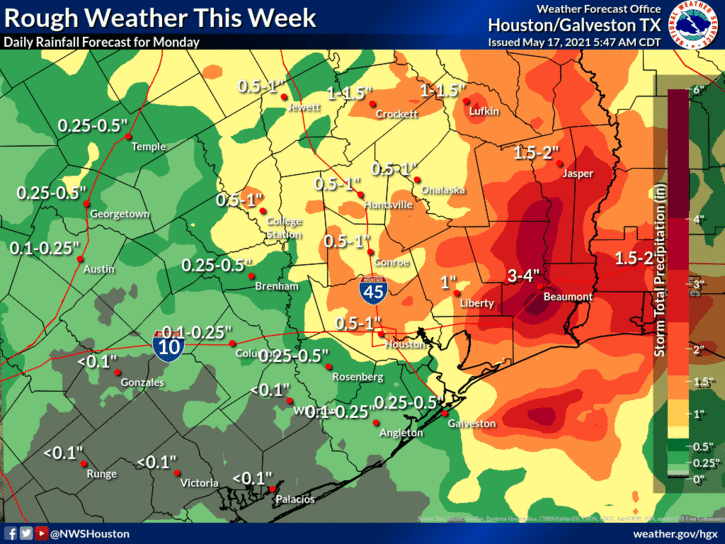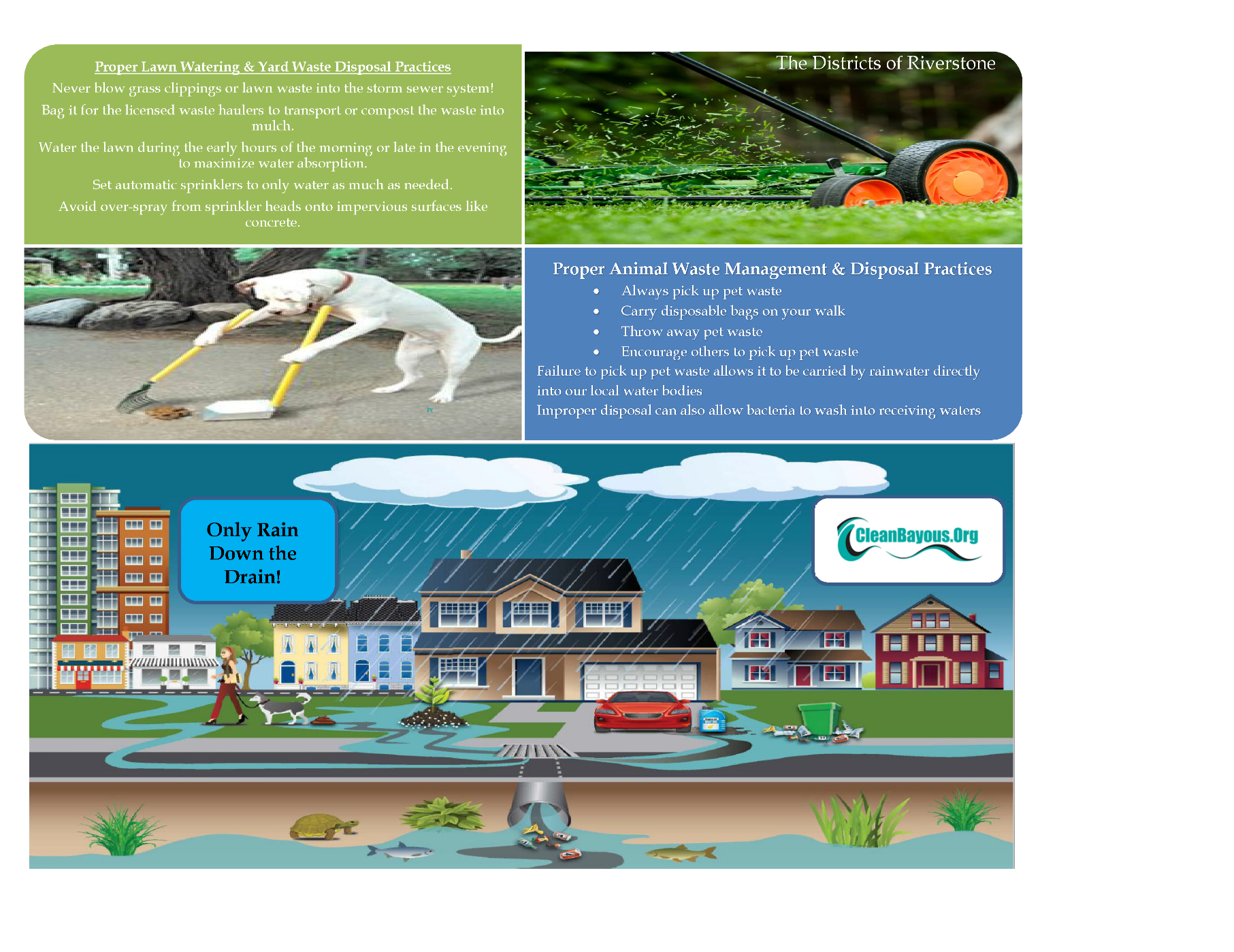Emergency Operations Update: Heavy Rain Event – May 17, 2021
Fort Bend County Levee Improvement District No. 15 (LID 15) is forecasted to receive 4-6 inches of rain this week, with isolated areas potentially received 10-12 inches of rain. The latest forecast and information from the National Weather Service is included below. Fortunately, the Brazos River is at low levels that do not impact drainage inside the LID 15 levee. The LID 15 pump stations and portable pumps are exercised monthly, and operators are available to run the pumps, if needed. Based on the current forecast, the District does not anticipate that the pumps will be operated.
During any heavy rain event there may be street ponding or flooding if the storm drains are overwhelmed and back up. As rainfall decreases, the storm sewers will catch up, and any water in the streets will recede. Never drive into high water.






